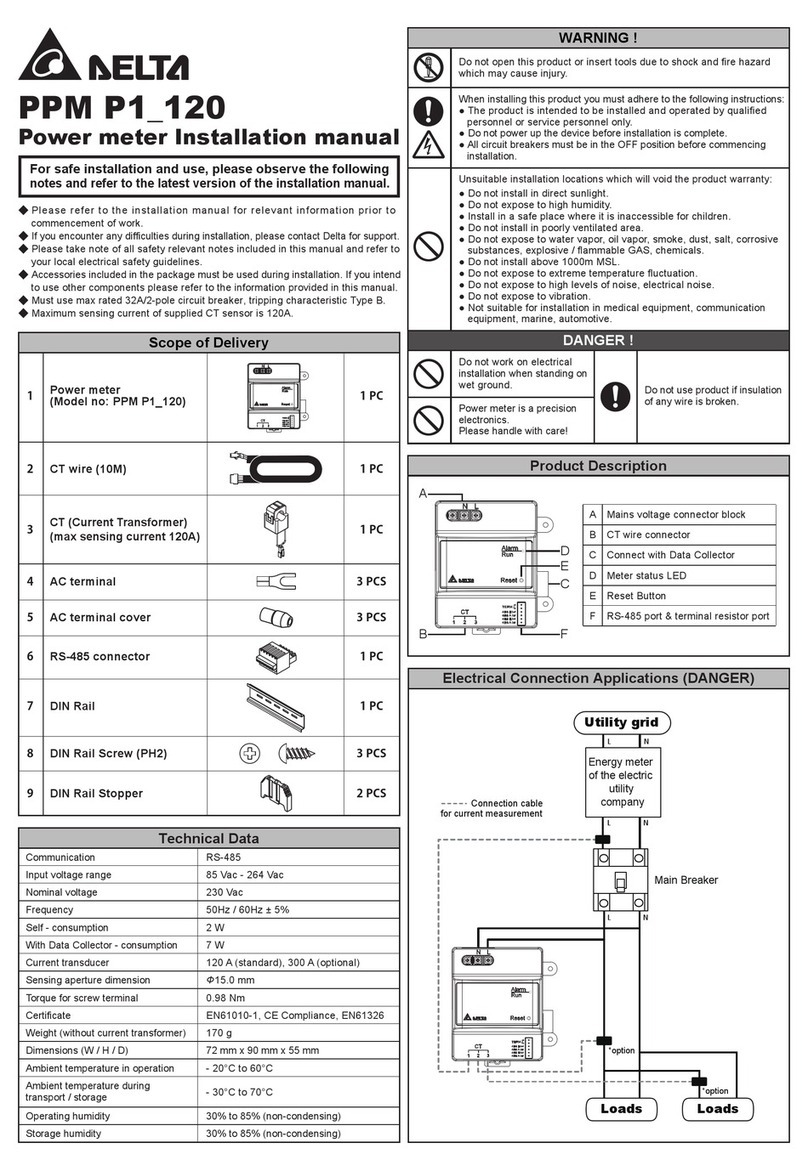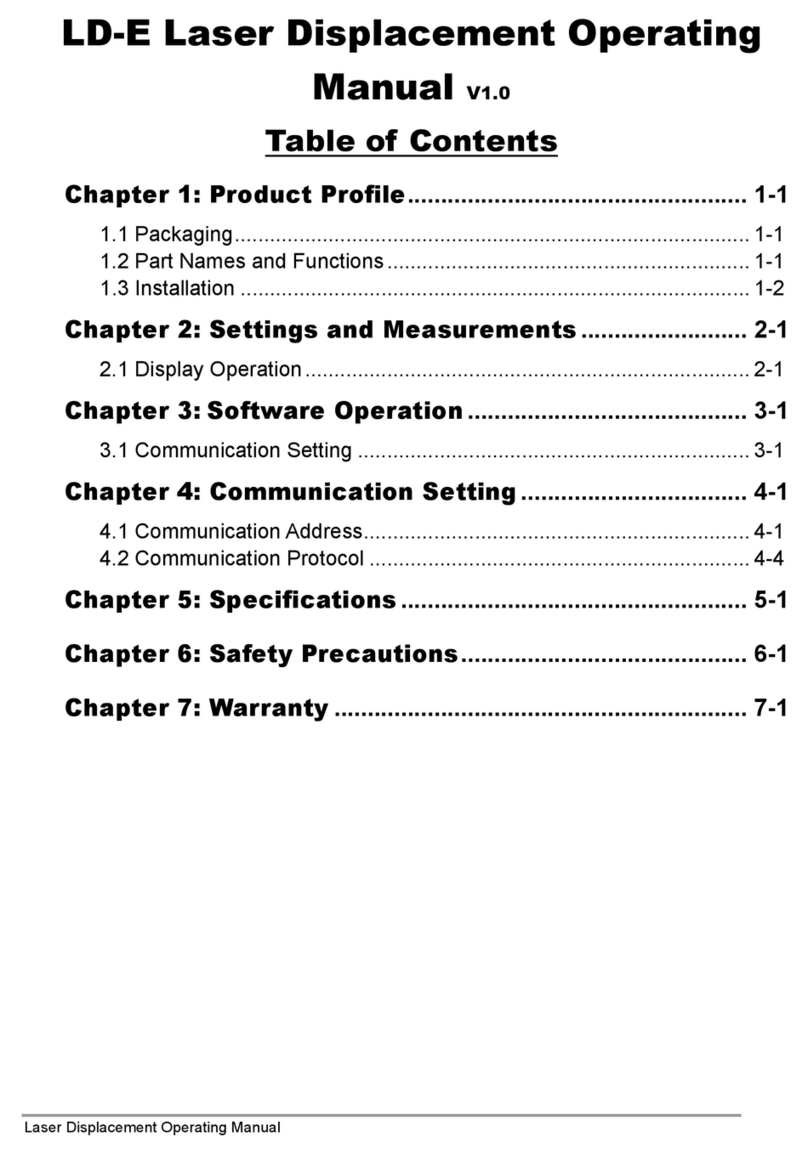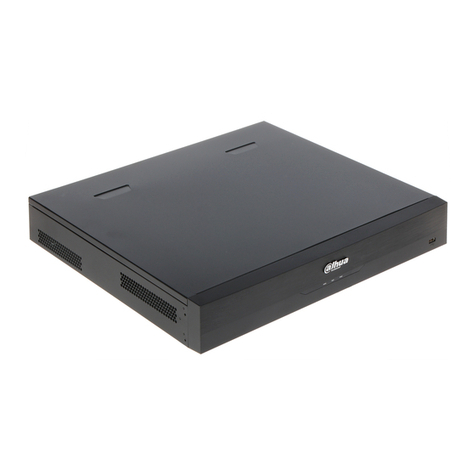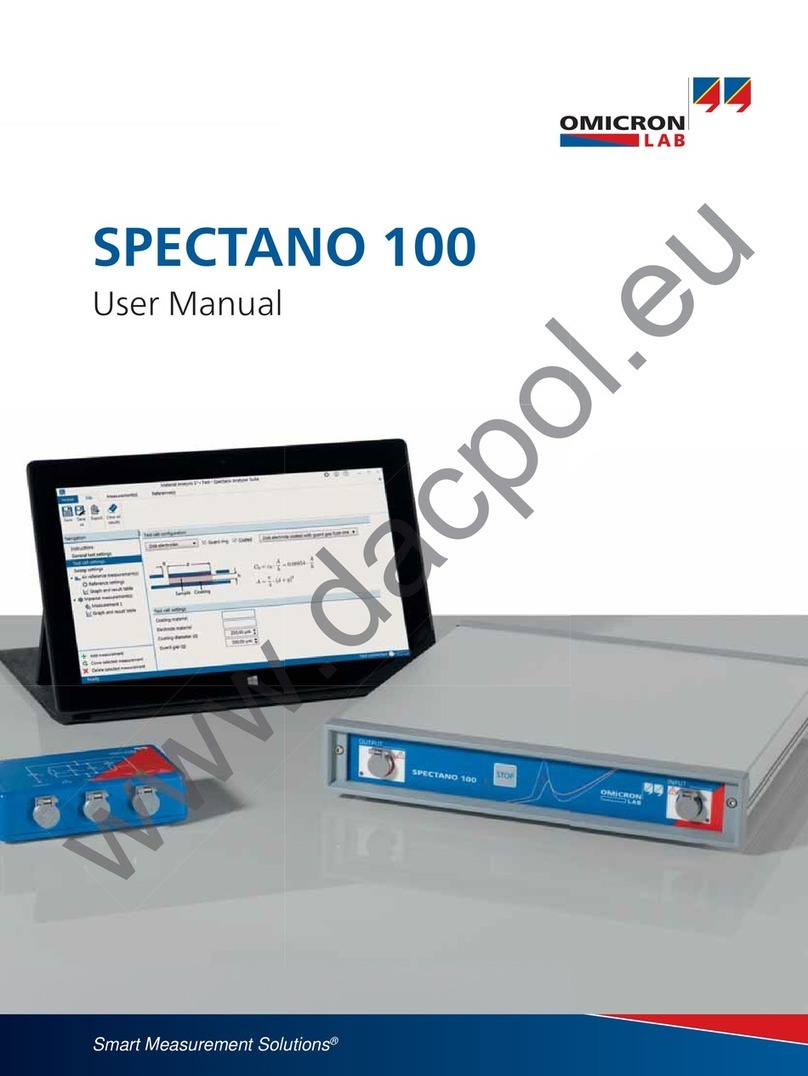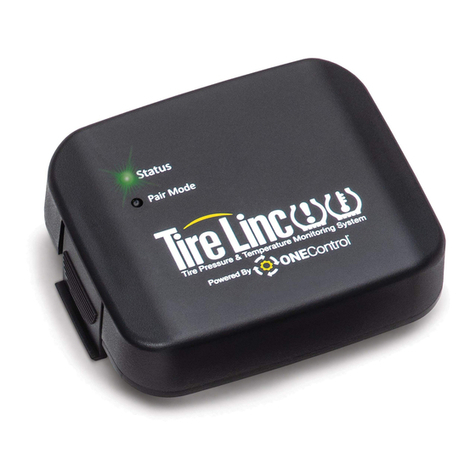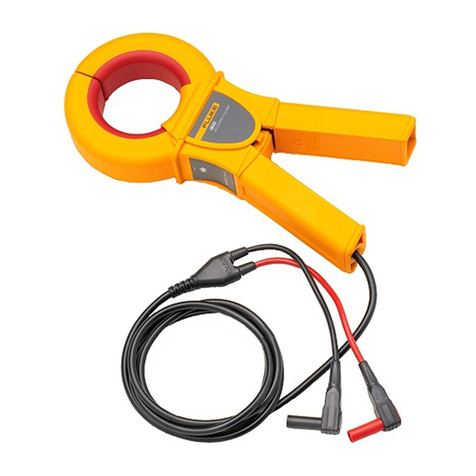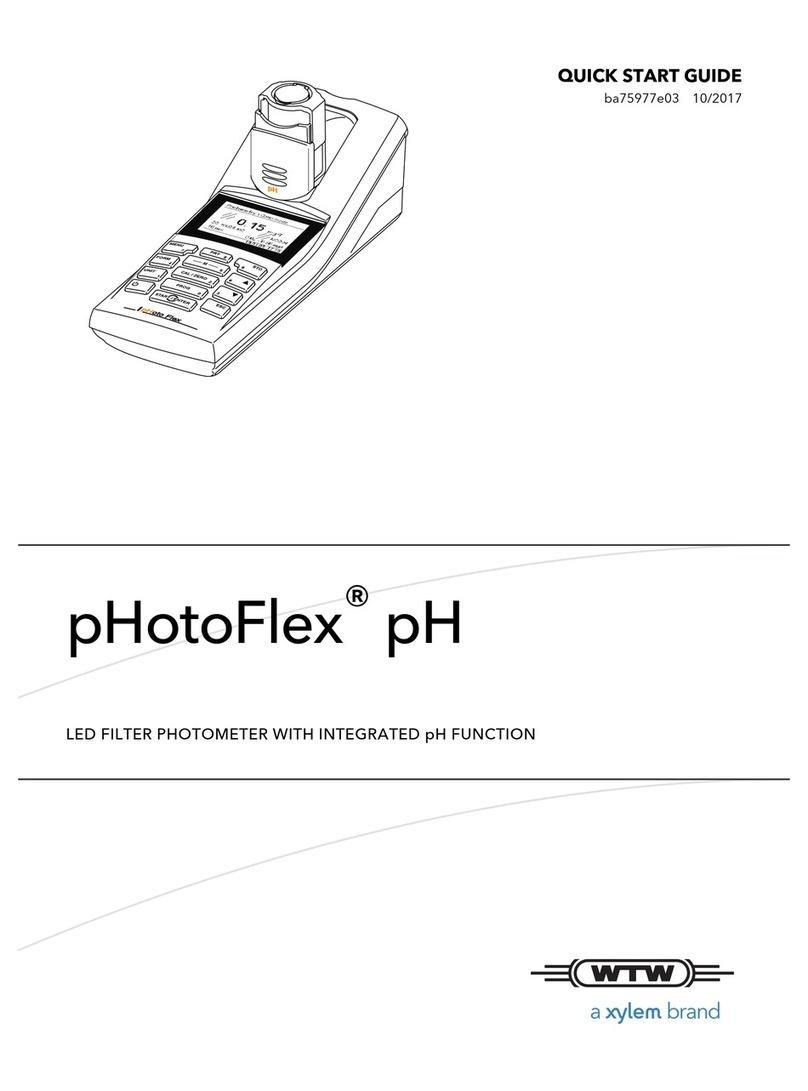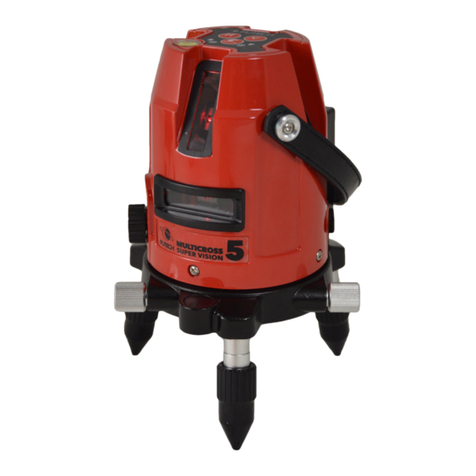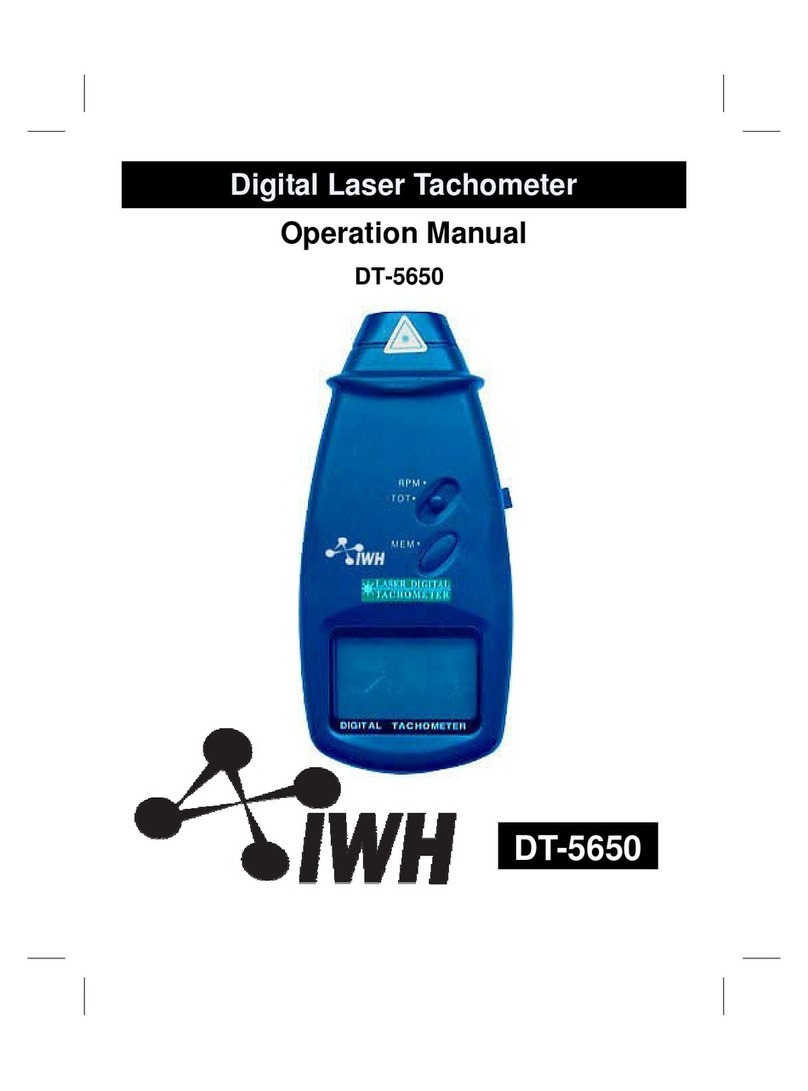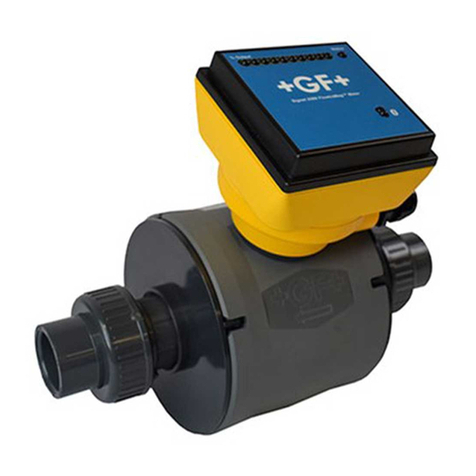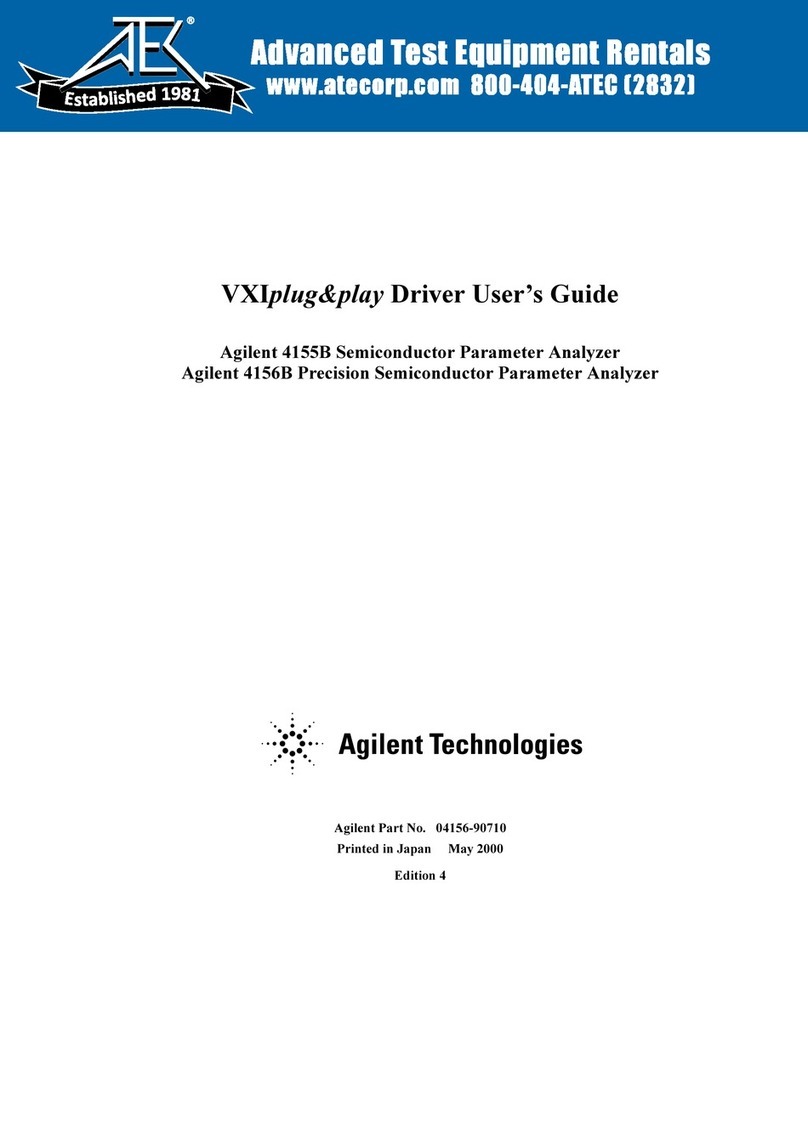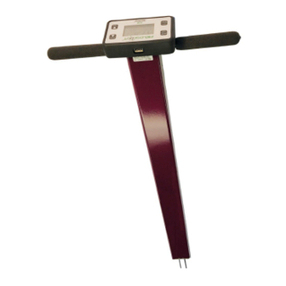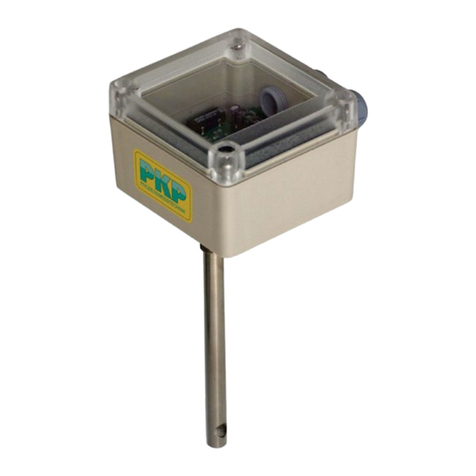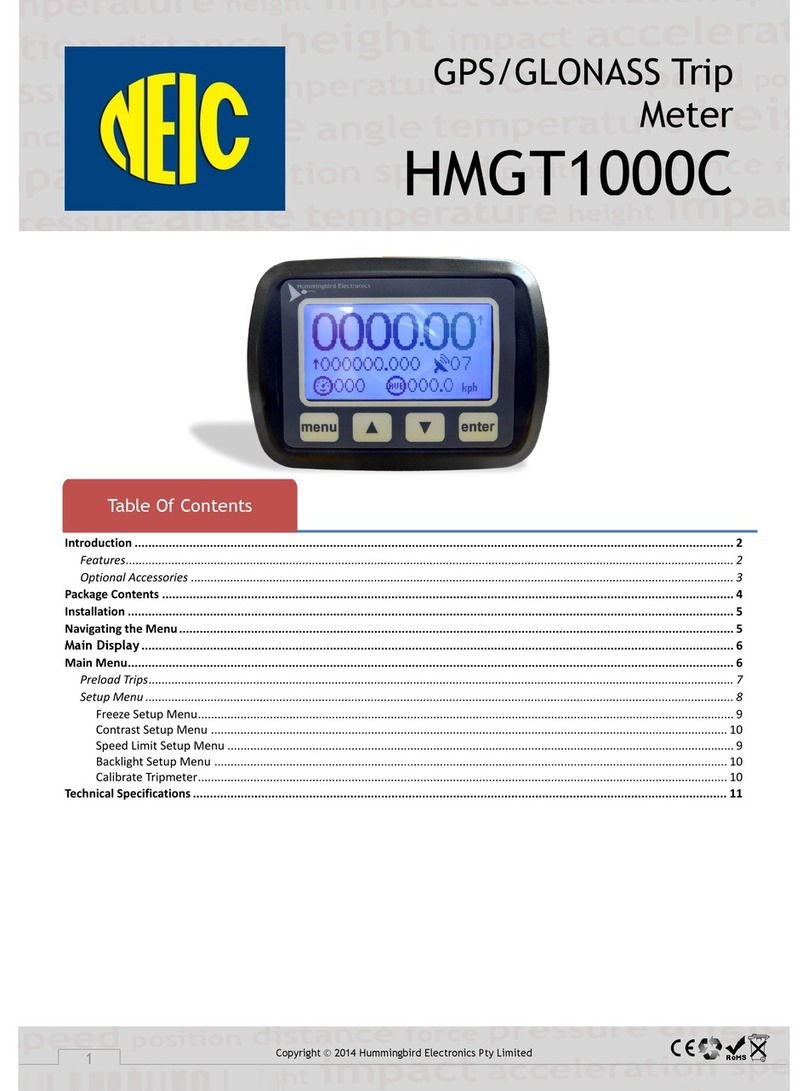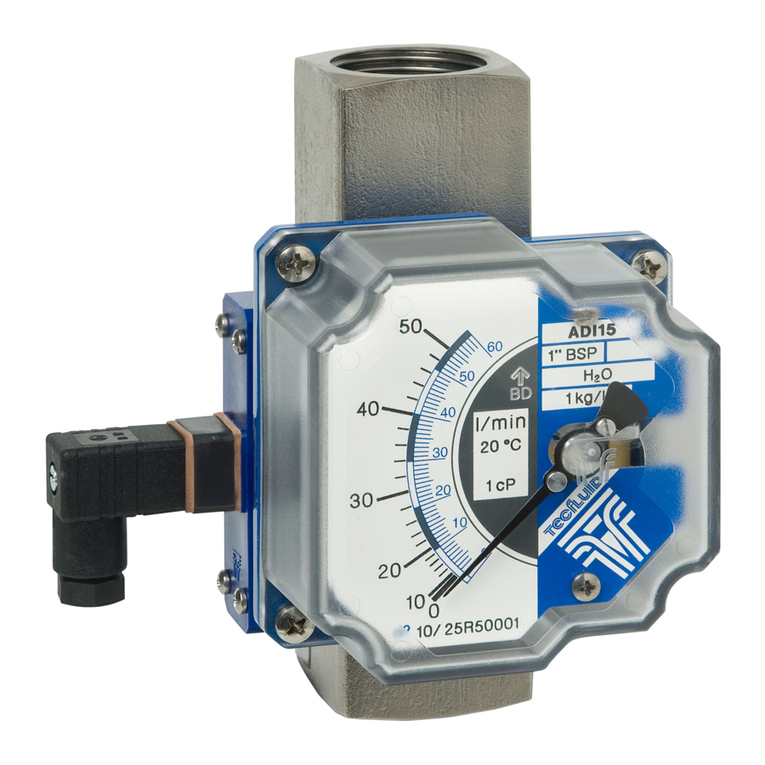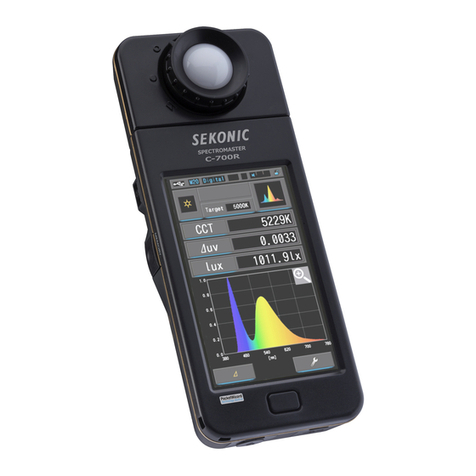Delta LTL3000 User manual

LTL3000 Retroreflectometer
User Manual
June 2020 –English language version

LTL3000 User Manual / June 2020 2DELTA
USA Statement
Note:
LTL3000 has been tested and found to comply with the limits for a Class B digital device, pursuant to Part 15
of the FCC Rules. These limits are designed to provide reasonable protection against harmful interference in
a residential installation. This equipment generates, uses, and can radiate radio frequency energy and, if not
installed and used in accordance with the instructions, may cause harmful interference to radio
communications. However, there is no guarantee that interference will not occur in a particular installation. If
this equipment does cause harmful interference to radio or television reception, which can be determined by
turning the equipment off and on, the user is encouraged to try to correct the interference by one or more of
the following measures:
•Reorient or relocate the receiving antenna.
•Increase the separation between the equipment and receiver.
•Connect the equipment into an outlet on a circuit different from that to which the receiver is
connected.
•Consult the dealer or an experienced radio/TV technician for help.
Canada Statement
Note:
This equipment has been tested and found to comply with the limits for a Class A digital device, pursuant to
part 15 of the FCC Rules. These limits are designed to provide reasonable protection against harmful
interference when the equipment is operated in a commercial environment. This equipment generates, uses,
and can radiate radio frequency energy and, if not installed and used in accordance with the instruction
manual, may cause harmful interference to radio communications. Operation of this equipment in a residen-
tial area is likely to cause harmful interference in which case the user will be required to correct the
interference at his/her own expense.

LTL3000 User Manual / June 2020 3DELTA
Disclaimer
The information contained in this document is subject to change without notice.
DELTA MAKES NO WARRANTY OF ANY KIND WITH REGARD TO THIS MATERIAL, INCLUDING, BUT
NOT LIMITED TO, THE IMPLIED WARRANTIES OF MERCHANTABILITY AND FITNESS FOR A
PARTICU-LAR PURPOSE. DELTA SHALL NOT BE LIABLE FOR ERRORS CONTAINED HEREIN OR FOR
INCIDENTAL OR CONSEQUENTIAL DAMAGES IN CONNECTION WITH THE FURNISHING,
PERFORMANCE OR USE OF THIS MATERIAL.
LTL3000 IS BUILT ON GENERAL PUBLIC LICENSE COMPONENTS. THE SOURCE CODE IS AVAILABLE
UPON REQUEST.
Intended use/purpose
LTL3000 retroreflectometer is a portable field instrument used for on-site inspection and quality control of
retroreflection properties of road markings.
Important Safety and Handling Information
Caution
Changes/modifications not approved by the responsible party could void the user’s authority to operate the
equipment.
Use the unit only in the way described in this manual. Failure to follow the guidelines and instructions in this
manual may be dangerous and illegal.
LTL3000 may not be used with other batteries than those supplied with the product.
Disposal and Recycling Information
Please ask your appointed dealer concerning disposal of LTL3000 in your country.
Visit our website: http://roadsensors.madebydelta.com/

LTL3000 User Manual / June 2020 4DELTA

LTL3000 User Manual / June 2020 5DELTA

LTL3000 User Manual / June 2020 6DELTA

LTL3000 User Manual / June 2020 7DELTA
Table of Contents
LTL3000 introduction........................................................................................................................... 8
Overview of the LTL3000..................................................................................................................... 8
Getting started .................................................................................................................................... 9
Icons ................................................................................................................................................ 10
Main menu........................................................................................................................................ 11
Perform a measurement .................................................................................................................... 12
Series............................................................................................................................................... 13
Users................................................................................................................................................ 14
Log................................................................................................................................................... 15
Calibration ........................................................................................................................................ 16
Settings ............................................................................................................................................ 19
Battery.............................................................................................................................................. 20
Battery charger.................................................................................................................................. 21
USB connection ................................................................................................................................ 22
Maintenance ..................................................................................................................................... 23
Appendix A: Specifications .................................................................................................................... 25
General characteristics ...................................................................................................................... 25
Electrical characteristics..................................................................................................................... 26
Environmental specifications.............................................................................................................. 26
Instrument dimensions....................................................................................................................... 26
Regulatory compliance ...................................................................................................................... 27
Appendix B: Safety symbols and model identification .............................................................................. 28

LTL3000 User Manual / June 2020 8DELTA
LTL3000 introduction
The LTL3000 retroreflectometer is a portable field instrument intended for measuring the retroreflection and
reflection properties of road markings.
LTL3000 measures the RL value (coefficient of retroreflected luminance at night) and the Qd value (day light
visibility). RL is a measure of the lightness of the road marking as seen by drivers of motorized vehicles in
car headlight illumination. The road is illuminated at an angle of 1.24°. The illumination for Qd is diffuse. The
reflected light for both RL and Qd is measured at an angle of 2.29°, which corresponds, to an observation
distance of 30 meters. This is relevant for a motorist’s viewing situation under normal conditions. Further
information on measuring principles and standards can be found on https://roadsensors.madebydelta.com/.
LTL3000 measures RL (nighttime visibility) and Qd (daytime visibility) under dry and wet conditions. LTL3000
measures RL from 0 to 4000 mcd·m-2·lx-1 and Qd from 0 to 318 mcd·m-2·lx-1. LTL3000 can in addition
measure nighttime chromaticity coordinates (x,y).
LTL3000 has automatic ambient light compensation. Daylight and other outside light sources will not affect
the accuracy of the measurements.
Overview of the LTL3000
The LTL3000 retroreflectometer is easy to operate and requires a minimum of instructions.
The measurement results are presented on the instrument’s touch screen. Each measurement can be linked
to a user/operator name and a series name.
The instrument provides a warning message or sound in case of unreliable measurement.
The majority of action buttons on the LTL3000 are accessible via the touch screen. The physical buttons and
features on the instrument are shown below.
Front and side of the LTL3000:

LTL3000 User Manual / June 2020 9DELTA
The center of the measurement field length (190 mm / 7.6 inch) is marked with a black arrow on the body of
the instrument. The width of the measurement field (50 mm / 2 inch) is centered.
The LTL3000 is equipped with a USB port on the side of the instrument for data export via a memory stick.
The instrument is powered by a rechargeable battery, offering many hours of measurement capacity. A
mains powered battery charger is supplied with the instrument as customary delivery.
Getting started
Insert battery: before using the LTL3000 instrument make sure that the battery is charged and inserted in
the battery slot on the side of the instrument.
Turn on: press the green button on the handle of the LTL3000 instrument. After 10-15 seconds, the system
has booted, and the instrument is ready for use.
Stand-by: the LTL3000 automatically switches to stand-by mode if the instrument has not been used for a
specific amount of time. From stand-by mode the instrument is instantly ready when pressing the green
button on the handle.
Calibrate: to ensure high quality of data we recommend that you perform an RL calibration of the instrument
every day the instrument is in use, typically in the morning before commencing the measurements (see how
in the section named ‘Calibration’ in this manual).
The Qd (optional feature) measurement system is factory calibrated and regular calibration is not necessary.
Switch off: press the X-button on the handle of the LTL3000 and then press ‘Shutdown’ in the menu on the
touch screen, and the instrument will switch off. Note: if not properly switched off, the instrument will continue
to consume battery in standby mode.

LTL3000 User Manual / June 2020 10 DELTA
Icons
The icons in the status bar at the top of the display screen give you information about the instrument status
and operational mode:
Icon explanation:
The current time (hour/min)
USB drive is connected and accepted
GNSS-signal is activated i.e. Global Navigation Satellite System
(optional feature)
Battery status

LTL3000 User Manual / June 2020 11 DELTA
Main menu
The various instrument actions can be accessed via the main menu on the display screen:
You can activate the main menu in 3 ways:
•press at the top left corner of the display screen to access the main menu,
•or swipe the screen from the left side,
•or press Xon the instrument handle.
If you want to close the menu again, just touch the display or press X on the instrument handle.
The main menu consists of these elements:
Icon
Function
Explanation
Measure
Perform an inspection
Series
Select, add, edit, or delete series of measurements
Users
Select, add, edit, or delete a user
Log
Export measurement series to USB stick or delete data
Calibrate
Calibrate the LTL3000
Settings
Adjust settings (location, time and date)
Shutdown
Power off the instrument
Note: all information you enter or alter under the individual menu items is automatically stored in the
instrument.

LTL3000 User Manual / June 2020 12 DELTA
Perform a measurement
Select ‘Measure’ from the main menu, and the instrument is now ready to perform a measurement.
Place the LTL3000 instrument on top of the specific road markings you want to measure and press the green
button on the instrument handle.
Wait a second until the reading is shown on the display:
The measurement data is automatically saved by the LTL3000 instrument.
You can now continue to conduct another measurement.
If you want to switch to another series, pressing and choose the relevant series from the drop-down
menu (or select it in the Series menu) and continue with your measurements.

LTL3000 User Manual / June 2020 13 DELTA
Series
Your measurements are stored in series. You can add, select, edit or delete series of measurements. First,
start by selecting ‘Series’ from the main menu. On the display, all your series are now listed on the left side
of the screen.
Select a series: Press the series on the list, you want to use –the series is now selected. You can now
continue with your measurements (switch to ‘Measure’ from the main menu) and the data will be linked to the
chosen series.
Add a new series: Press on the top bar to add a new series and write a name in the ‘Name’ field for
your new series (use the keyboard on the touch screen). Press the return arrow to finish. The series is now
added, and you can continue with your measurements (switch to ‘Measure’ from the main menu) and the
data will be linked to the new series.
Edit a series: From the series list, select the series you want to edit and type the new name of the series in
the ‘Name’ field. When finished press return arrow, and the new name of the series is saved.
Delete a series: Press the series on the list you want to delete, then press on the top bar. The series
and associated measurement data are now deleted. Note: It is required that at least one series exists, thus it
is impossible to delete the last series.

LTL3000 User Manual / June 2020 14 DELTA
Users
It is possible to link the measurements to a specific person. It could be relevant in cases where the
instrument is used by different staff and you want to identify which measurements have been conducted by
whom.
You can select, add, edit or delete users. First, start by selecting ‘Users’ from the main menu. On the display,
all your users are now listed on the left side of the screen.
Select a user: Press the user on the list, you want to use –the user is now selected. You can now continue
with your measurements (switch to ‘Measure’ in the main menu) and the user will be linked to the data.
Add a new user: Press on the top bar to add a new user. Type the name of the new user in the ‘Name’
field by using the keyboard on the touch screen. Press the return arrow to finish. The user is now added, and
you can continue with your measurements (switch to ‘Measure’ from the main menu) and the user will be
linked to the data.
Edit an existing user: Select the user on the list and rename the user profile (using the keyboard on the
screen and press the return arrow to finish.). The user is now renamed and you can continue with your
measurements.
Delete a user: On the list select the user you want to delete. Press on the top bar. The user and the
related measurements are now deleted.
Note: it is required that at least one user exists, in other words it is impossible to delete the last user.

LTL3000 User Manual / June 2020 15 DELTA
Log
The LTL3000 keeps a log of all the measurements conducted. You can see statistics for each series of data
and export the series data. Start by selecting ‘Log’ from the main menu. Series, that contain measurement
data, are now displayed in a list on the left side of the screen.
View series statistics: Press the series on the list, you are interested in. The statistics are now shown on
the right side of the screen.
•Count: number of measurements in the series
•Avg.: an average of all the measurements in the series
•Max: the highest value measured in the series
•Min: the lowest value measured in the series
Export measurement data:
Series data can easily be exported to a USB stick for further analysis. To transfer data, simply choose the
relevant series (from the list on the left side) and press ‘Export Excel and Google Earth file(s)’. The data is
now transferred to the USB stick. Google Earth files will only be available if the instrument is equipped with
GNSS and if there is valid GNSS data recorded.
Note: remember to insert a FAT32-formated USB memory stick in the USB port before you transfer the data.

LTL3000 User Manual / June 2020 16 DELTA
Calibration
To ensure high quality of the measurement data, DELTA recommends that you calibrate the LTL3000 every
day that you use the instrument - typically in the morning before commencing your measurements.
The calibration process automatically compensates for instrument offsets etc.
It is possible to make three different types of calibrations:
•Reference RL calibration
•Reference Qd calibration
•Dark calibration + reference calibration
Reference RL calibration (daily)
To calibrate the LTL3000 use the RL calibration target delivered with the instrument:

LTL3000 User Manual / June 2020 17 DELTA
Calibrate the RL value by following these steps:
•Select ‘Calibrate’ from the main menu.
•Type in the RL-calibration value printed on the calibration target sticker.
•Place the calibration target under the LTL3000 (in the front) and press ‘Calibrate RL’ on the screen.
Note: the pins on the calibration target fit into the slots underneath the LTL3000 instrument.
•Wait for success confirmation.
RL Dark calibration (occasionally)
Normally, it is sufficient to make a reference calibration of the LTL3000 instrument prior to conducting
measurements. However, if the instrument in rare occasions measures incorrectly it is recommended to do a
dark calibration.
To do a dark calibration follow these steps:
•Select ‘Calibrate’ from the main menu.
•Press ‘RL Dark calibration’ on the screen.
•Tilt the instrument backwards and make sure it is not pointing at anything within several meters.
•Press OK and wait for success confirmation.
•Important: Perform Reference RL calibration (see above)
Reference Qd calibration (never):
The instrument is factory calibrated for the Qd value and thus Qd should not be re-calibrated.
Qd calibration requires a Qd calibration marking (optional). The instrument will warn about this fact before
calibration.
Special Qd calibration marking.
Note: Be aware that it is NOT possible to recover the factory calibration if the Qd value is recalibrated.
To calibrate the Qd value follow these steps:
•Select ‘Calibrate’ from the main menu.
•Type in the Qd calibration value printed on the calibration target sticker.

LTL3000 User Manual / June 2020 18 DELTA
•Place the LTL3000 all the way back on the Qd calibration target facing in the direction indicated.
•Press ‘Calibrate Qd’ on the screen.
•Wait for success confirmation.
To calibrate the Qd value, place the LTL3000 on top of the Qd calibration target.
Qd Dark calibration (never):
The instrument is factory calibrated for the Qd-value and thus Qd should not be re-calibrated.
Qd calibration requires a Qd calibration marking (optional). See above
The instrument will warn about this fact before calibration
Note: Be aware that it is NOT possible to recover the factory calibration if the Qd value is recalibrated.
Normally, it is sufficient to make a reference calibration of the LTL3000 instrument prior to conducting
measurements. However, if the instrument in rare occasions measures incorrectly it is recommended to do a
dark calibration.
To do a dark calibration follow these steps:
•Select ‘Calibrate’ from the main menu.
•Press ‘Qd Dark calibration’ on the screen.
•Tilt the instrument backwards and make sure it is not pointing at anything within a few meters.
•Press OK and wait for success confirmation.
•Important: Perform Reference Qd calibration (see above)

LTL3000 User Manual / June 2020 19 DELTA
Settings
To adjust the regional settings and time/date, select ‘Settings’ from the main menu.

LTL3000 User Manual / June 2020 20 DELTA
Battery
The instrument is powered by a Li-Ion battery, which under normal use requires no maintenance. The battery
is a standard Bosch Li-Ion battery model GBA 12V 3.0Ah. Rated 12 Vdc, 3.0Ah.
Bosch Li-Ion battery delivered with the LTL3000.
The battery is equipped with a thermal sensor that only allows charging within a range between 0ºC and
45ºC (32ºF and 113ºF). This ensures long battery life.
A substantial drop in obtainable measurements on a fully charged battery indicates that the battery is worn
out and must be replaced.
Insert the rechargeable battery on the side of the LTL3000.
For your safety
Do not expose the battery to heat or flames: Danger of explosion. Do not place the battery on a heater or
expose to direct sunlight for long periods.
The battery can be stored within a temperature range between -10°C to +60°C (14°F to 140°F), but we
recommend storage between 0°C to +30°C (32°F to 86°F), due to lifetime considerations of the battery.
Allow a warm battery to cool before charging.
When handling or storing the battery take special care to avoid possible short circuiting the battery contacts.
Table of contents
Other Delta Measuring Instrument manuals
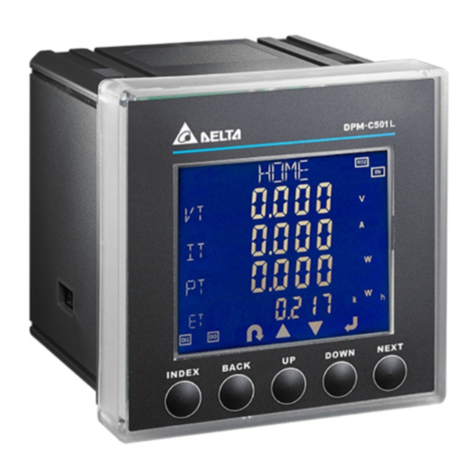
Delta
Delta DPM-C501L User manual

Delta
Delta TZU-22 User manual
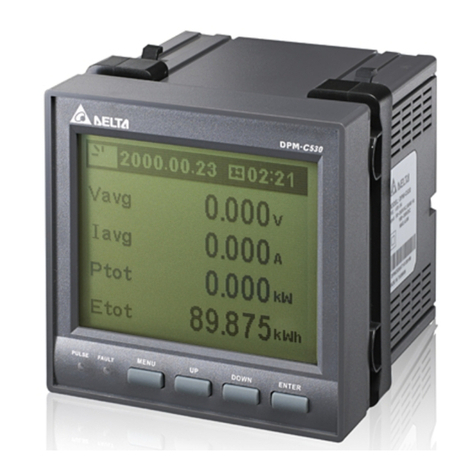
Delta
Delta DPM-C530 User manual
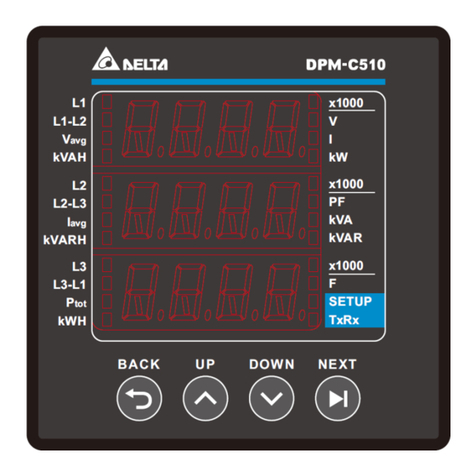
Delta
Delta DPM-C510 User manual
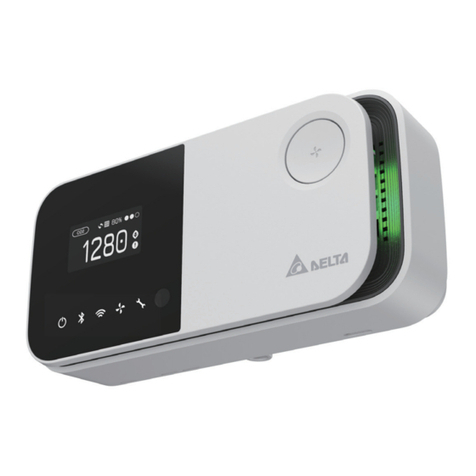
Delta
Delta UNO-C07X011 User manual
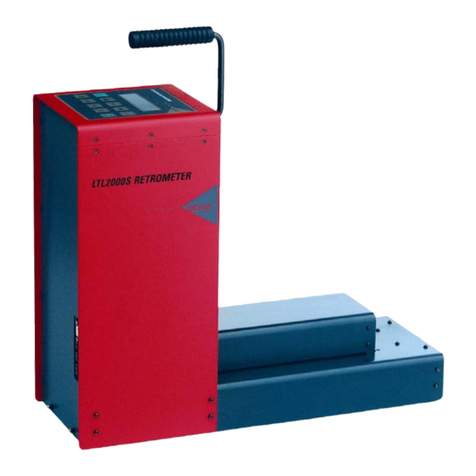
Delta
Delta LTL2000S User manual
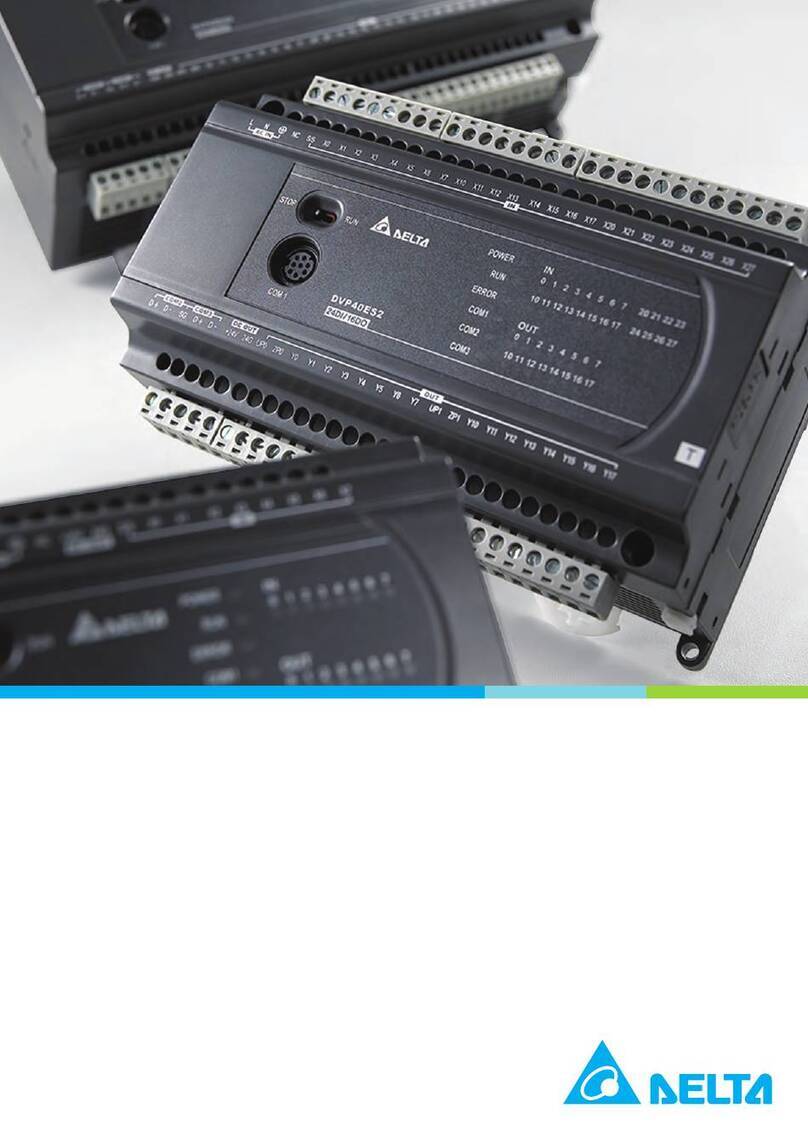
Delta
Delta DVP-ES2 User manual

Delta
Delta EMS 32-011 User manual

Delta
Delta DPM-C501L User manual

Delta
Delta RetroSign GR1 User manual
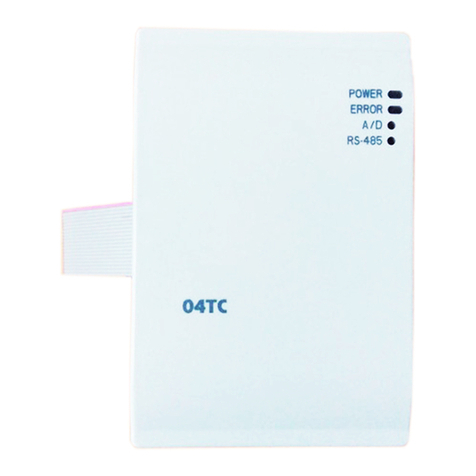
Delta
Delta DVP04TC-H2 User manual
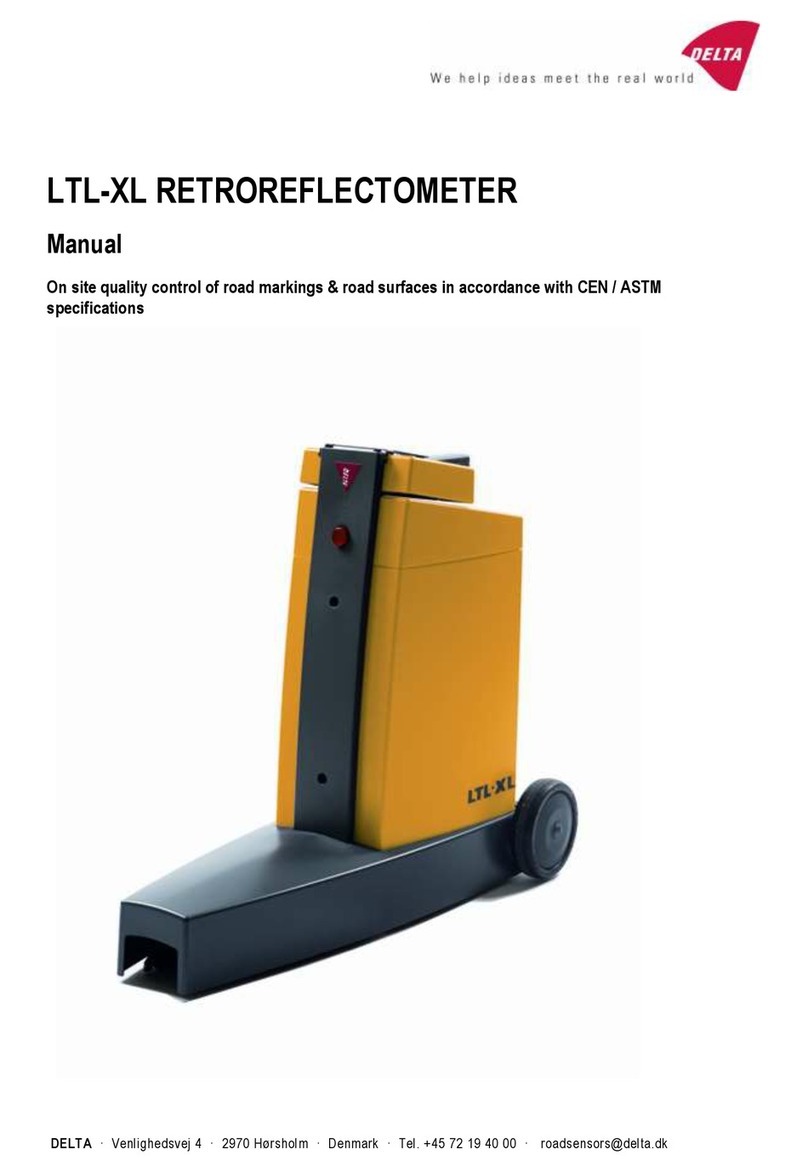
Delta
Delta LTL-XL User manual
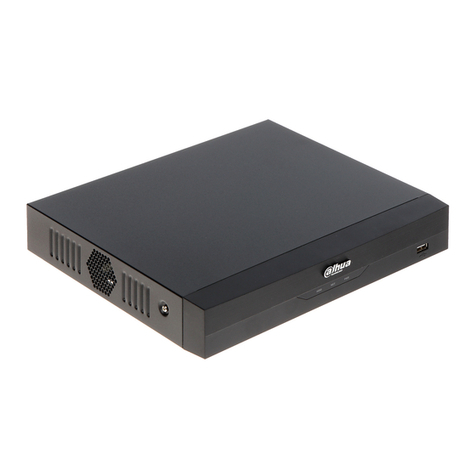
Delta
Delta XVR5116HS-I2 User manual
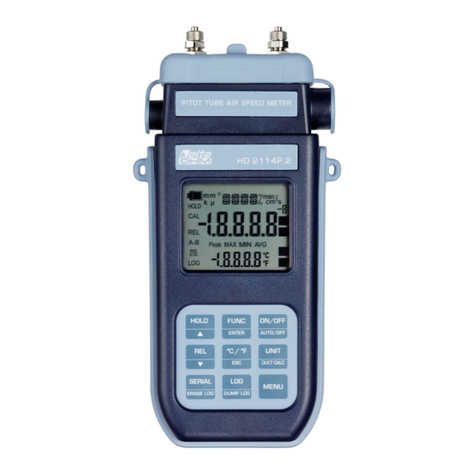
Delta
Delta HD2114P.0 User manual
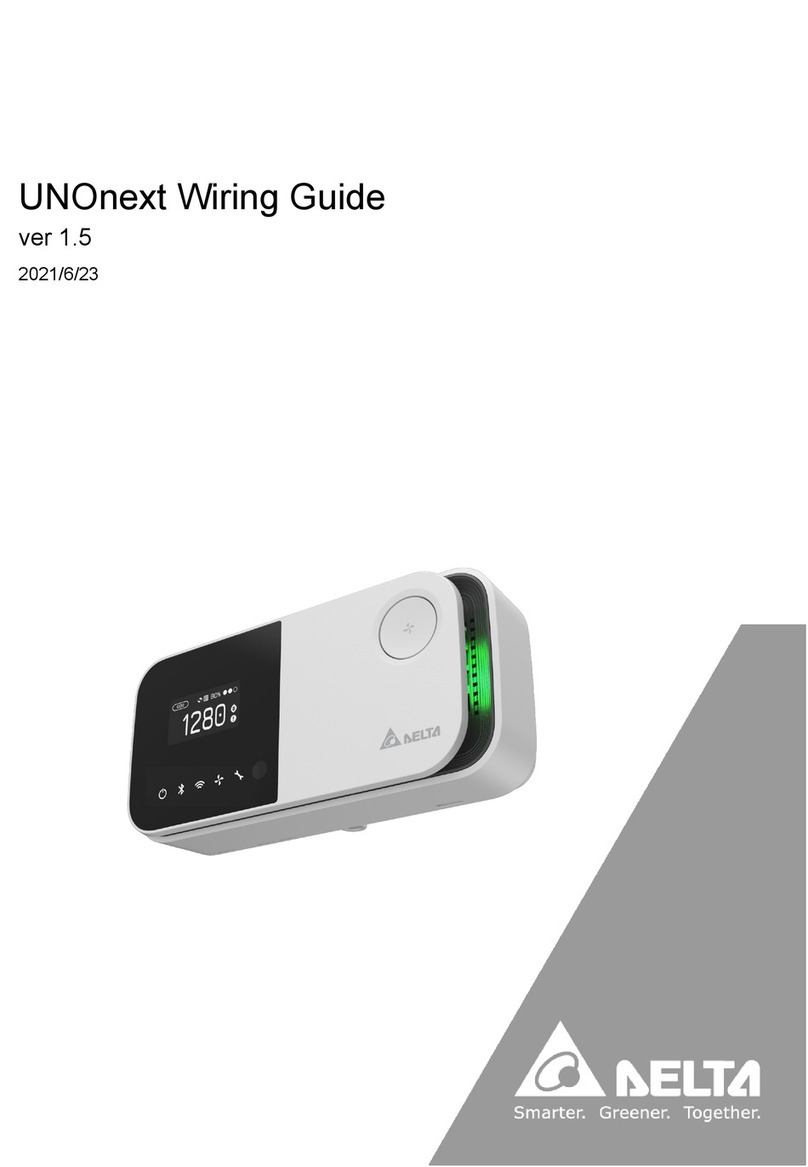
Delta
Delta UNOnext User manual

Delta
Delta REVEZ-HD-TRIO DVB-T/T2 User manual
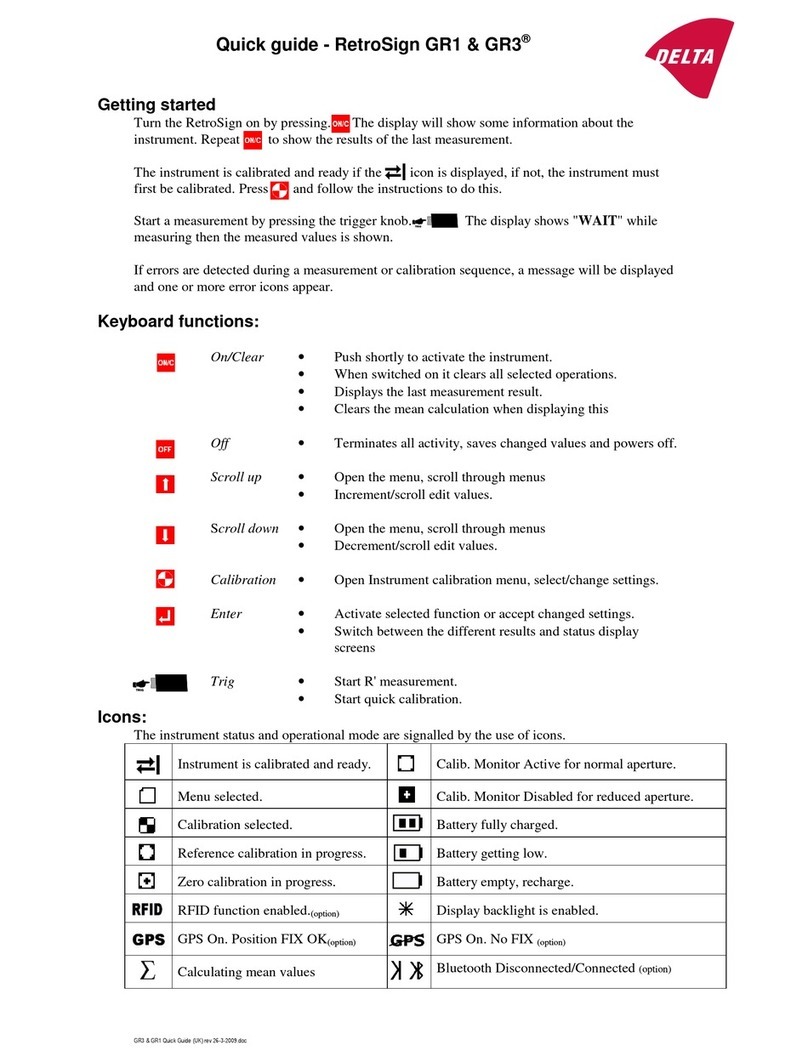
Delta
Delta RetroSign GR1 User manual
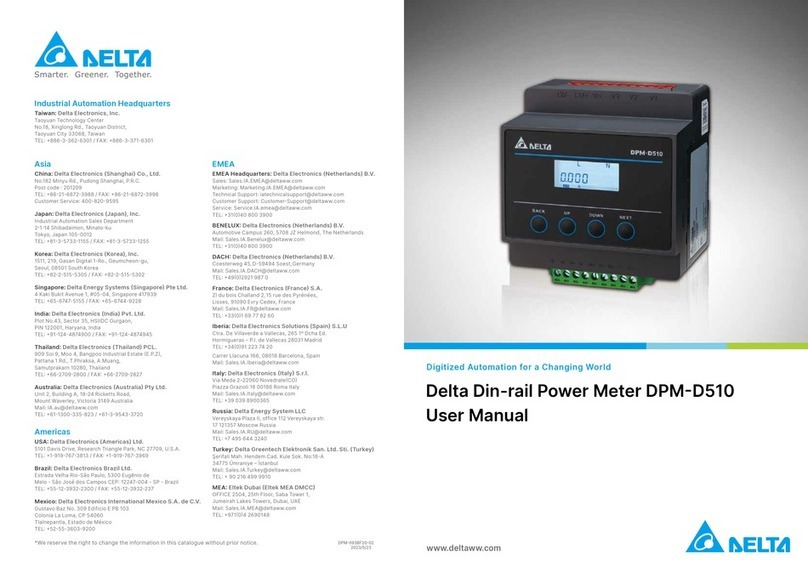
Delta
Delta DPM-D510 User manual
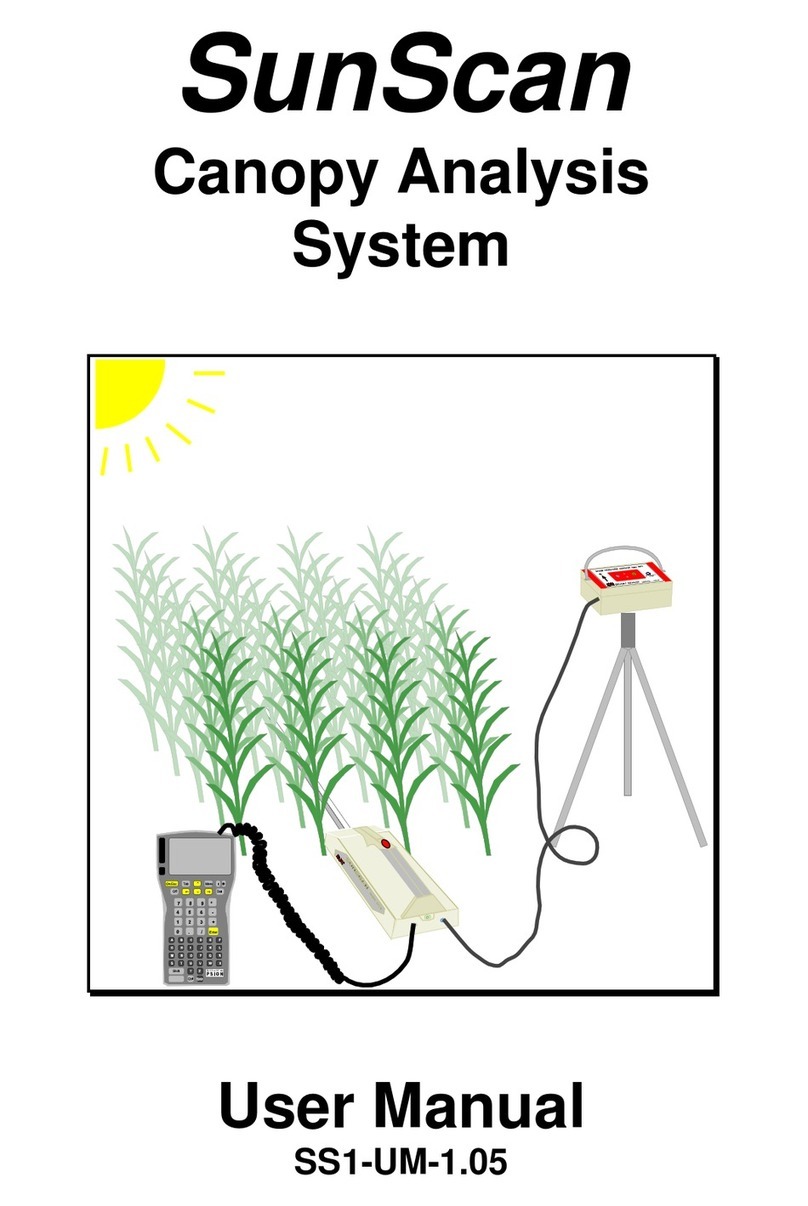
Delta
Delta SS1-UM-1.05 User manual
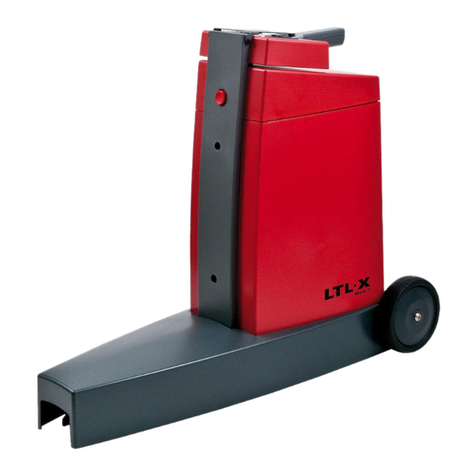
Delta
Delta LTL-X Mark II User manual
